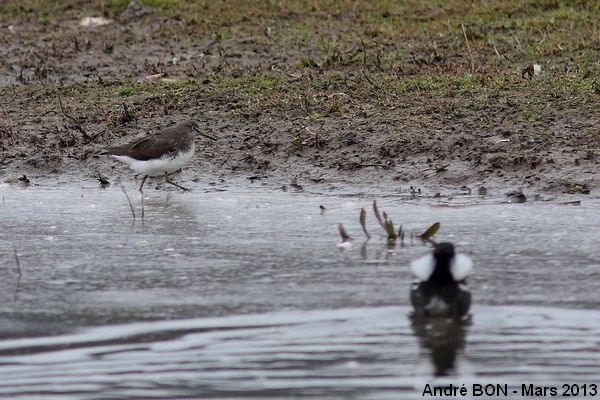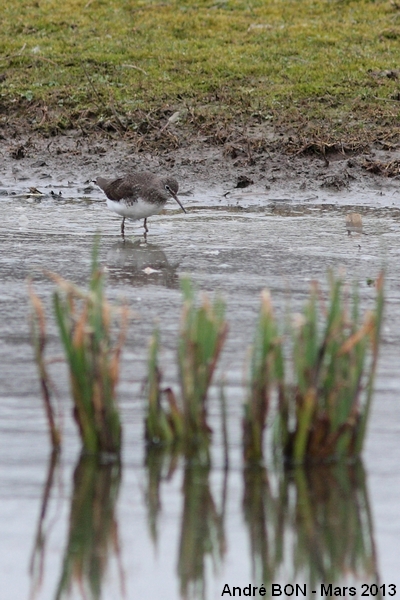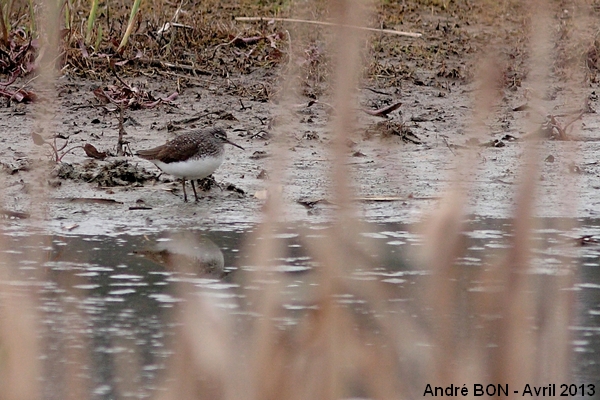


| Green Sandpiper (Tringa ochropus (Linnaeus, 1758)) |



|
|
Scientific name: Tringa ochropus (Linnaeus, 1758) Common name: Green Sandpiper French name: Chevalier culblanc Order: Charadriiformes Family: Scolopacidae Size: Body size: 21 to 24 cm; Weight : 70 to 90 g; Wingspan: 39 to 44 cm. Habitat: Marshes, mudflats, ponds, damp forests during the nesting season. Food: Small invertebrates caught in shallow water close to the banks. Nesting: Green Sandpipers generally use the old nest of another species located on a Birch or a Pine. There are four eggs per clutch. Migration: In winter, Green Sandpipers move to western or southern Europe, to India, to south-east Asia or to tropical Africa. Geographic area: Subarctic regions of Europe and Asia during the nesting season. |
The Green Sandpiper has a dark olive brown upper side with small white dots. The rump and the underside are white. The upper side of the tail bears several broad black stripes. The upper side of the head and the chest are dark coloured and striated with pale grey. There is a white eyebrow starting from the bill and ending at the eye. The eye is thinly circled with white. The greenish legs are rather short. The bill is short and greyish. The chest and the upper parts are a uniform colour when in internuptial plumage. The under side of the wings is black and contrasts with the white belly when in flight. The Wood sandpiper has longer and more yellowish legs. The eyebrow extends beyond the eye. It has a more slender body. The Common Sandpiper has the white colour extending upwards on the shoulders. |
| [To know more about the Green Sandpiper] [Next picture] [Top] |

|
I have observed this Green Sandpiper on the banks of a very small pond where I came to see Common Snapes. This observation was done rather in the far and this picture is an important crop. |
| [To know more about the Green Sandpiper] [Next picture] [Previous picture] [Top] |

|
I have observed this solitary Green Sandpiper at the same place during about one month (I suppose that this was always the same bird but I am not totally sure). |
| [To know more about the Green Sandpiper] [Previous picture] [Top] |

|
The Green Sandpiper is a very shy bird and it is very difficult to approach close to it. |